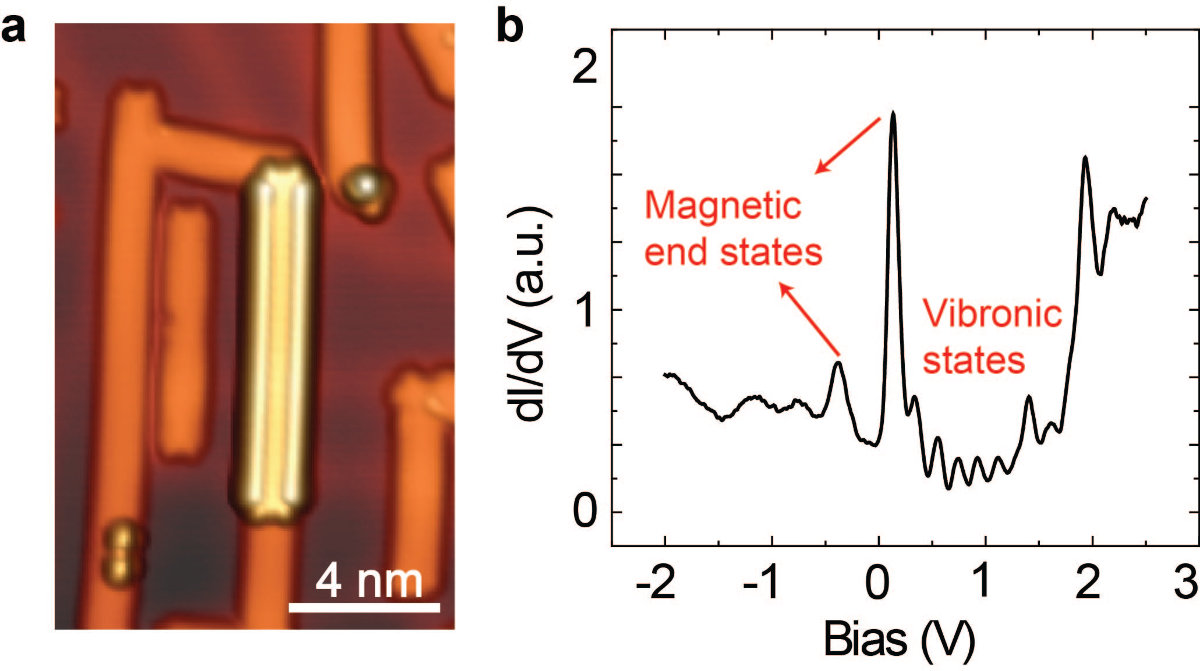




| 09:00-10:40 | Tu1: Transport in electronic devices |
| 10:40-11:20 | Coffee break |
| 11:20-13:00 | Tu2: Surface diffusion and migration |
| 13:00-15:30 | Lunch break (on your own) |
| 15:30-16:40 | Tu3: Chemistry and growth of graphene |
| 16:40-17:20 | Coffee break |
| 17:20-18:50 | Tu4: Electron-phonon coupling in graphene |
| 19:00-21:30 | Poster session A |
Chair: D. Sanchez-Portal, San Sebastián, Spain
Contributed talk
Electronic and vibronic properties of atomically precise bilayer graphene nanoribbons
1nanotech@surfaces Lab, Swiss Federal Laboratories for Materials Science and Technology, CH-8600 Dübendorf, Switzerland
2Max Planck Institute for Polymer Research, Ackermannweg 10, 55124 Mainz, Germany
3Department of Chemistry and Biochemistry, University of Bern, Freiestrasse 3, 3012 Bern, Switzerland
Graphene nanoribbons (GNRs), by quantum confinement and edge effects, exhibit exceptional electronic properties such as tunable band gaps and magnetic edge states. Here, we focus on armchair GNRs of width N=7 (7-AGNR) as grown on Au(111) via bottom-up method [1,2]. In order to electronically decouple ribbons from the metallic growth substrate, post-growth transfer of the ribbons to insulating substrates is typically needed. In this work, we establish a STM manipulation routine, which allows transferring ribbons with length from 3 nm to 10 nm in situ onto various nanostructures such as NaCl islands or other ribbons where the later results in the formation of atomically precise bilayer nanoribbon structures (Fig. 1a).
Scanning tunneling spectroscopy is used to investigate the electronic and vibronic properties of bilayer ribbons. Our well-controlled experimental measurements of 7-aGNRs on top of another ribbon unambiguously resolved magnetic end states at the zigzag termini. Interestingly, we found that the two respective ends of the ribbon exhibit different spectroscopic features, where one end shows an energy splitting of magnetic end states of 0.5 eV and the other end a splitting of 1.3 eV. Besides the main features of magnetic end states, we observed equally-spaced satellite peaks beyond the main peak which is associated with the vibrations of ribbon ends due to inelastic tunneling process. In order to further elucidate our experimental observations, we have performed both, tight-binding and DFT calculations. For the periodic bilayer, on-top and Bernal-type stacking were compared. Bernal-type stacking is more favorable by 140 meV per armchair unit cell and corresponds to a stacking distance of 3.40 Å, which results in two ends with different adsorption configurations, and further affects the energy splitting of magnetic end states. However, both, tight binding and DFT calculations predict a difference of only 50 meV between the magnetic end state splitting at the respective ends, which is significantly smaller than the experimentally observed 800 meV. The reasons behind this discrepancy will be discussed in view of the role of charge doping of GNRs. Furthermore, we will discuss the electronic structure of GNRs that have been decoupled from the metal substrate by STM-based manipulation onto NaCl islands.

Figure 1: a: STM topography image of a (7, 40) GNR transferred onto another ribbon through STM manipulation (Usample = -1.0 V, I = 100 pA). b: differential conductance spectrum taken at one end of the upper ribbon showing satellite vibronic peaks.
[1] J. Cai et al., Nature 466, 470 (2010)
[2] H. Söde et al., Physical Review B 91, 045429 (2015)